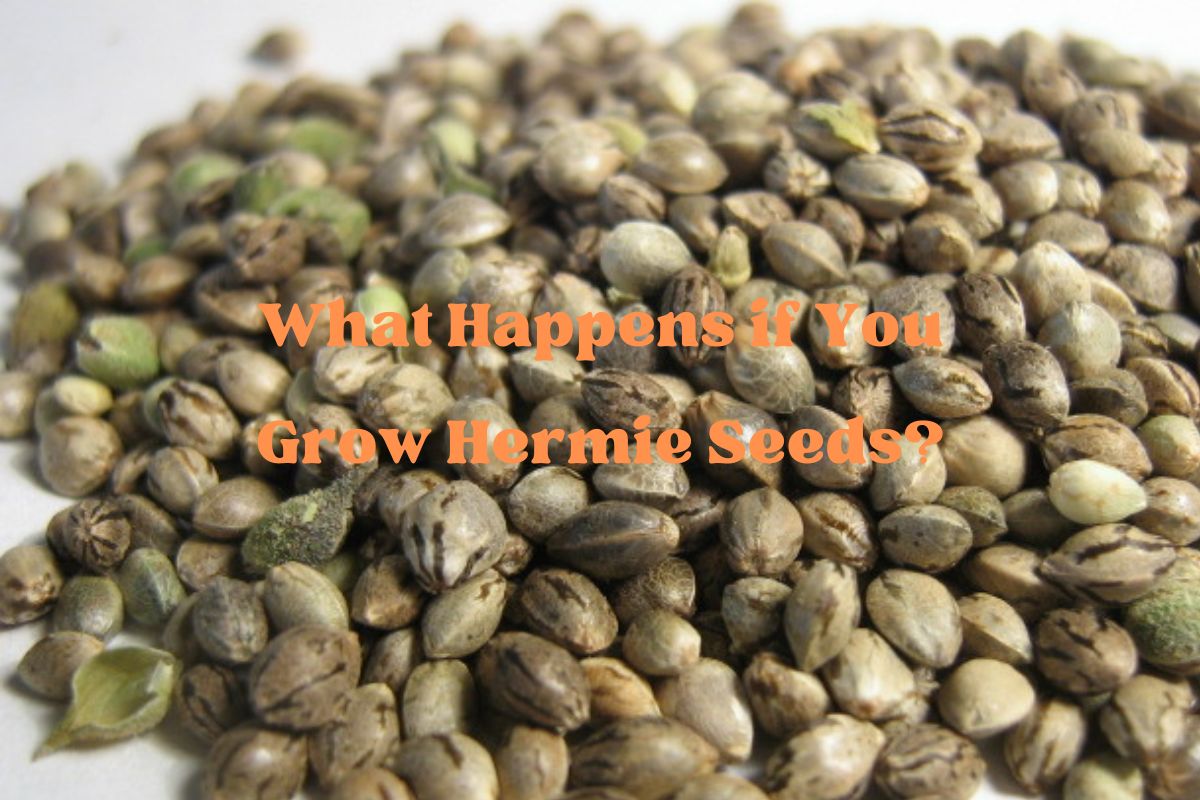Discovering seeds in your cannabis buds without any nearby male plants can lead you to hermie seeds, a result of a female plant that has shown hermaphrodite tendencies and self-pollinated. Interested in what happens if you choose to grow these seeds? Let’s dive in.
Understanding Hermie Cannabis Plants
Hermie plants, in essence, are cannabis plants that develop both male and female reproductive organs. This can happen for a variety of reasons, including but not limited to genetic predisposition and environmental stressors such as improper light cycles, extreme temperatures, or physical damage. These plants then have the capacity to pollinate themselves, leading to the creation of seeds without the need for a separate male plant.
Growth and Development of Hermie Seeds
When you opt to grow hermie seeds, you’re essentially working with cannabis genetics that have a propensity for hermaphroditism. This doesn’t unequivocally mean that all plants grown from these seeds will become hermies themselves, but the risk is elevated. It’s a risk many growers are willing to take, especially when considering the cost savings and the fact that these seeds can indeed produce potent, bud-producing female plants.
Genetic Roulette
One of the most significant uncertainties with hermie seeds is the unpredictability of their genetic expression. Unlike seeds acquired from established breeders, where characteristics such as size, bud structure, growth time, and potency are somewhat predictable, hermie seeds are a wild card. They can exhibit a vast range of phenotypes, making the cultivation process more of an experiment than a guaranteed outcome.
Practical Tips for Growing Hermie Seeds
For those considering or already in the process of growing hermie seeds, here are some practical steps to maximize your chances of success:
- Monitor Your Plants Closely: Regular inspections allow you to identify hermaphroditic traits early. Removing hermies from your grow space promptly can prevent them from pollinating themselves or other female plants, reducing the likelihood of seedy buds.
- Maintain a Stress-Free Environment: Since stress is a major trigger for hermaphroditism, maintaining optimal growing conditions is key. Ensure your plants have the right amount of light, are not subjected to extreme temperatures, and receive proper nutrients.
- Experiment with Cloning: If you find a hermie plant that exhibits more female than hermaphroditic characteristics, consider cloning it. Clones carry the exact genetic makeup as their parent, which might allow you to preserve desirable traits while minimizing the hermaphroditic tendencies under controlled conditions.
- Embrace the Learning Experience: Growing hermie seeds is not just about the outcome but also about the journey. Each plant will teach you more about cannabis cultivation, resilience, and the delicate balance between genetics and environment.
Looking Forward
The decision to grow hermie seeds is not one to be taken lightly. It involves accepting the potential for a less predictable cultivation journey, with its set of challenges but also its unique rewards. For many growers, the appeal lies not just in the cost savings but in the intrinsic value of nurturing a plant from seed to harvest, regardless of its origins. As the cannabis community continues to grow and share knowledge, the collective understanding of hermaphroditism and how to maneuver its challenges improves, offering hope and guidance for growers who choose this path.
While growing hermie seeds can be seen as a gamble, it is also an opportunity for learning and growth. With the right approach and mindset, it can be a rewarding venture. As with all aspects of cannabis cultivation, success lies in the dedication, adaptability, and the willingness to learn from each plant, each season, and each harvest.
